Species B. juncea | Genus Brassica | |
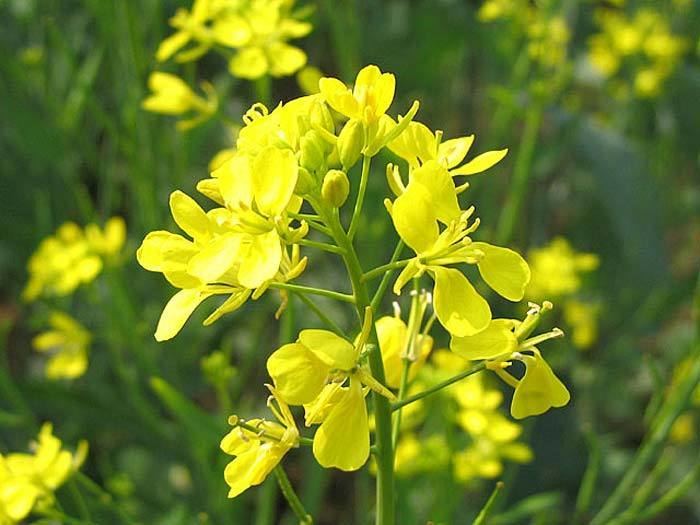 | ||
Similar | ||
Growing mustard greens florida broad leaf indian mustard
Brassica juncea, mustard greens, leaf mustard, Indian mustard, Chinese mustard, jie cai (in Mandarin) or kai choi (in Cantonese) is a species of mustard plant. One subvariety is southern giant curled mustard, which resembles a headless cabbage such as kale, but with a distinct horseradish or mustard flavor. It is also known as green mustard cabbage.
Contents
- Growing mustard greens florida broad leaf indian mustard
- Brassica juncea brown mustard part 1 of 2
- Food
- Nutrition
- Green mustard
- Phytoremediation
- References
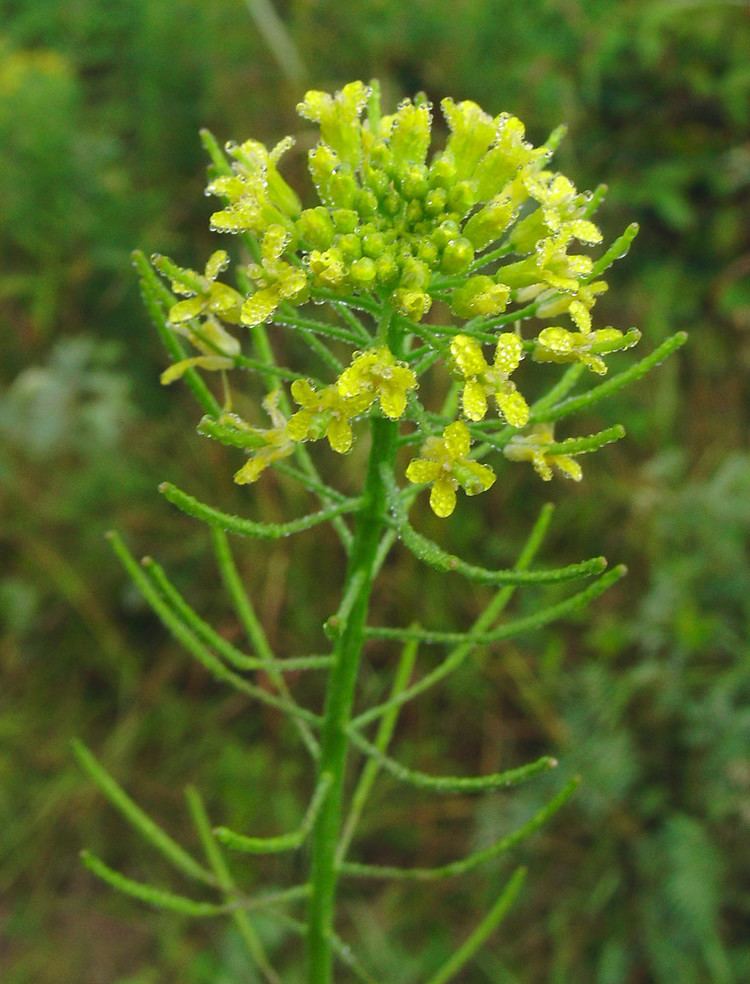
Brassica juncea brown mustard part 1 of 2
Food
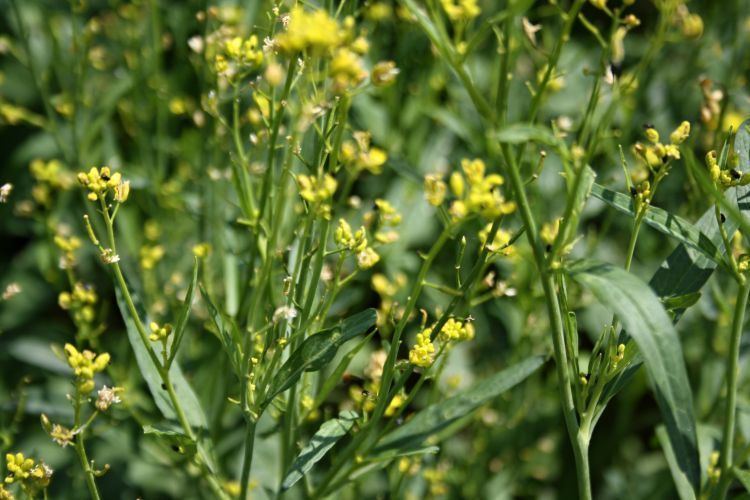
The leaves, seeds, and stems of this mustard variety are edible. The plant appears in some form in African, Pakistani, Bangladeshi, Italian, Indian, Chinese, Japanese, Korean, and African-American (soul food) cuisines. Cultivars of B. juncea are grown for their greens, and for the production of oilseed. The mustard condiment made from the seeds of the B. juncea is called brown mustard and is considered to be spicier than yellow mustard.
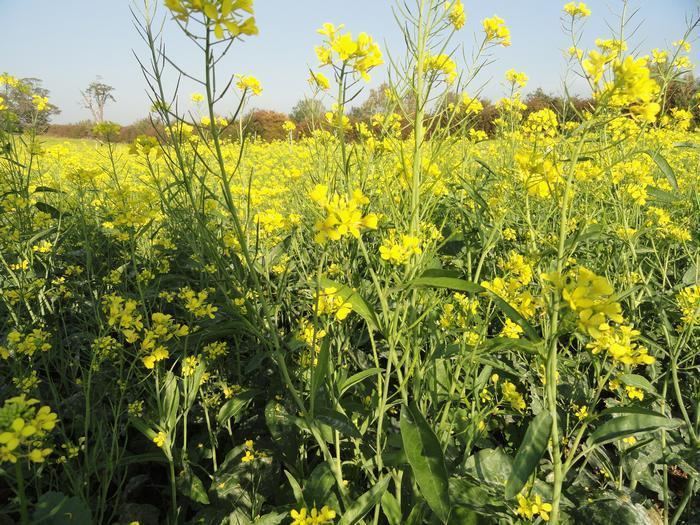
Because it may contain erucic acid, a potential toxin, mustard oil is restricted from import as a vegetable oil into the United States. Essential oil of mustard, however, is accepted as GRAS (Generally Recognized as Safe). But in Russia, this is the main species grown for the production of mustard oil. It is widely used in canning, baking and margarine production in Russia, and the majority of Russian table mustard is also made from B. juncea.
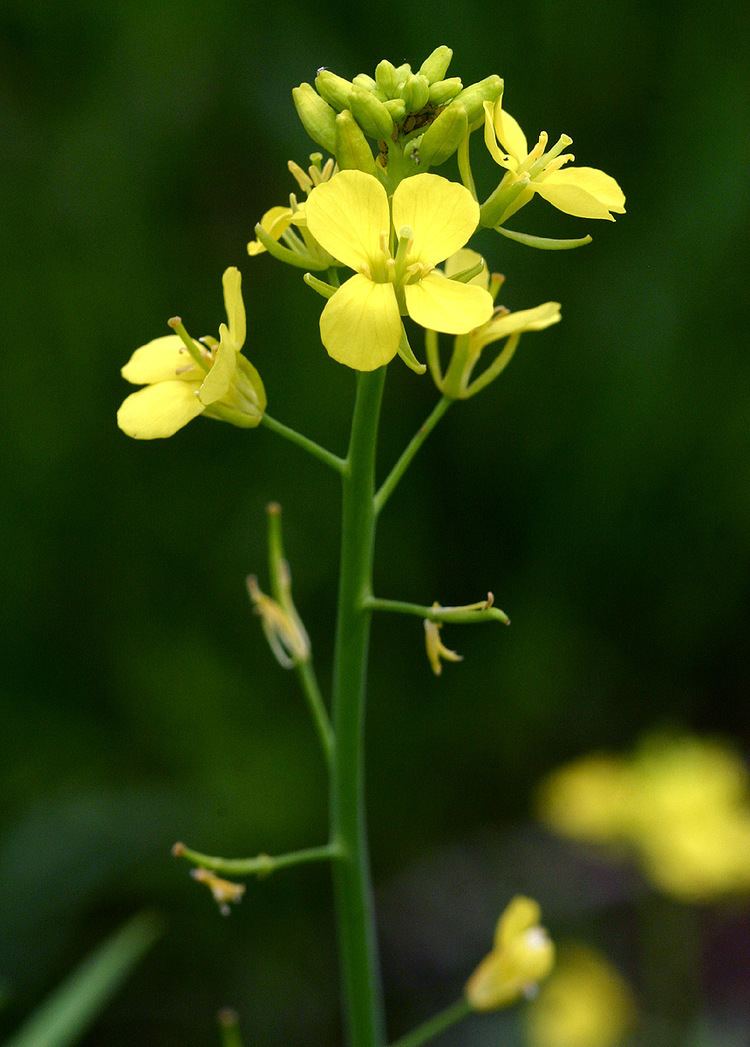
The leaves are used in African cooking, and all plant parts are used in Indian cuisine, particularly in the mountain regions of Nepal, as well as in the Punjab cuisine of India and Pakistan, where a dish called sarson da saag (mustard greens) is prepared. B. juncea subsp. tatsai, which has a particularly thick stem, is used to make the Indian pickle called achar, and the Chinese pickle zha cai.
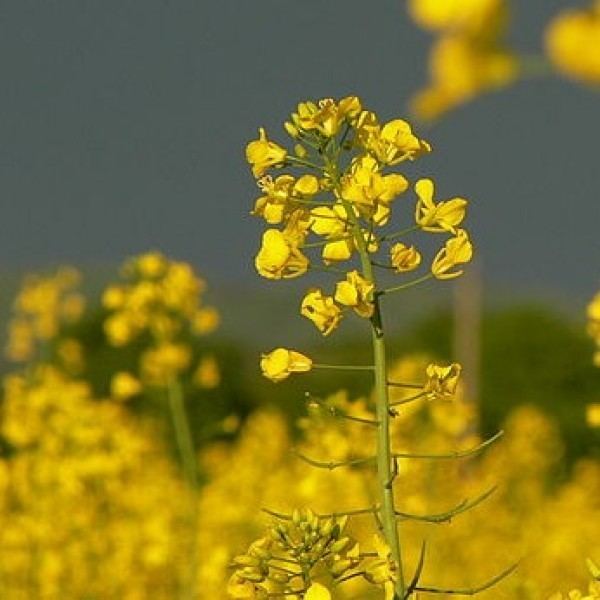
The Gorkhas of Darjeeling and Sikkim prepare pork with mustard greens (also called rayo in Nepali). It is usually eaten with relish and steamed rice, but can also be eaten with chapati (griddle breads). Brassica juncea (especially the seeds) is more pungent than greens from the closely related Brassica oleracea (kale, broccoli, and collard greens), and is frequently mixed with these milder greens in a dish of "mixed greens".
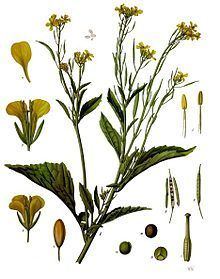
Chinese and Japanese cuisines also make use of mustard greens. In Japanese cuisine, it is known as takana and often pickled for use as filling in onigiri or as a condiment. Many varieties of B. juncea cultivars are used, including zha cai, mizuna, takana (var. integrifolia), juk gai choy, and xuelihong. Asian mustard greens are most often stir-fried or pickled. A Southeast Asian dish called asam gai choy or kiam chai boey is often made with leftovers from a large meal. It involves stewing mustard greens with tamarind, dried chillies and leftover meat on the bone. Brassica juncea is also known as gai choi, siu gai choi, xaio jie cai, baby mustard, Chinese leaf mustard or mostaza.
Nutrition
In 100 grams, cooked mustard greens provide 26 calories and are a rich source (20% or more of the Daily Value) of Vitamins A, C and K which is especially high as a multiple of its Daily Value. Mustard greens are a moderate source of vitamin E and calcium. Greens are 92% water, 4.5% Carbohydrates, 2.6% protein and 0.5% fat (table).
Green mustard
Vegetable growers sometimes grow mustard as a green manure. Its main purpose is to act as a mulch, covering the soil to suppress weeds between crops. If grown as a green manure, the mustard plants are cut down at the base when sufficiently grown, and left to wither on the surface, continuing to act as a mulch until the next crop is due for sowing, when the mustard is dug in. In the UK, mustard sown in summer and autumn is cut down starting in October. April sowings can be cut down in June, keeping the ground clear for summer-sown crops. One of the disadvantages of using mustard as a green manure is its propensity to harbor club root.
Phytoremediation
This mustard plant is used in phytoremediation to remove heavy metals, such as lead, from the soil in hazardous waste sites because it has a higher tolerance for these substances and stores the heavy metals in its cells. In particular, Brassica juncea was particularly effective at removing cadmium from soil (Schneider et al.). The process of removing heavy metals ends when the plant is harvested and properly discarded. Phytoremediation has been shown to be cheaper and easier than traditional methods for heavy metal reduction in soils. In addition, it has the effect of reducing soil erosion, reducing cross-site contamination.
